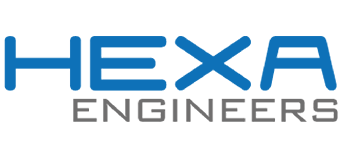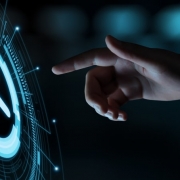The revolution that Augmented Reality is bringing to Industry 4.0
Augmented Reality (AR) is one of the most used terms in the era of Industry 4.0. But despite this, AR technology is not new –dated for several decades–, nor has it just started to be used very recently. It is true, however, that its universalization has been taking place in a few years now.
The developments that are increasingly taking place, the fact that it is a technology that is both affordable and easy to use, and the advantages that mobile devices offer, make AR a most attractive ingredient in today’s industrial landscape. in day.
Until not so long ago, AR technology was only available to computers, forcing companies to be constrained enough to be able to apply it in factories. The arrival and natural expansion of smartphones and tablets have meant that a barrier that sooner or later was destined to disappear has been blown up. But not only are these mobile devices used to operate with AR, but smart glasses are surely the device that can get the most performance in terms of this technology.
Although AR promises to revolutionize even more in the years to come, there are now four areas in which it is being used the most in the industry. Next, we are going to go through them one by one.
Relationship between worker and robot
Augmented Reality improves communication between the users of a factory, but it also brings a lot of clarity in the relationship between the worker and the robot. New technologies help create a safer environment where workers and robots work together. In that sense, AR can be used to contextualize information and make the user more aware of the work of robots, improving their own sense of security and system performance.

Maintenance, assembly and repair
Factory maintenance, assembly and repair is benefiting greatly from the combination of AR and smart glasses. They help solve one of the most important problems that occur in a production plant, which has to do with the continuous change between devices and manuals, which can cause difficulties in the flow of tasks. For this reason, smart glasses –which are still hands-free devices– manage to leave behind the complex logistics that in many cases meant for workers to depend on tasks that forced them to resort to several sources of information at the same time.
Through the AR, manuals and other types of documentation are created, as well as remote assistance tasks. In this way, sharing specialized knowledge and any technical details is much simpler and more practical. Digital cufflinks, graphic images, or animated 3D models can provide the details necessary for the tasks that the worker needs to carry out.
Training
Training processes are another aspect that significantly benefit from the advances brought about by digitization. One of the greatest benefits that AR technologies bring in training aspects is to use them in the simulation of dangerous tasks. Students can develop and improve their skills without damaging machinery and also eliminating the risk of death. Along with dangerous tasks, tasks that will cause production interruption during training can be moved to a fully digital environment where no machinery or experts have to pause. Another asset of augmented reality training is the increased attention it will bring to the process. Learners can be more motivated by knowing that they won’t cause an accident while learning, and new technology can make them more interested.
Inspections
The mental limitations that human beings suffer make it common for inspections in the industry to suffer errors. Fortunately, Augmented Reality technology minimizes these limitations by allowing workers to compare real objects and digital twins. In addition, with the use of mobile devices, smart glasses can allow the comparison to be exact by superimposing the 3D digital model of the object on the real object that is being inspected.









